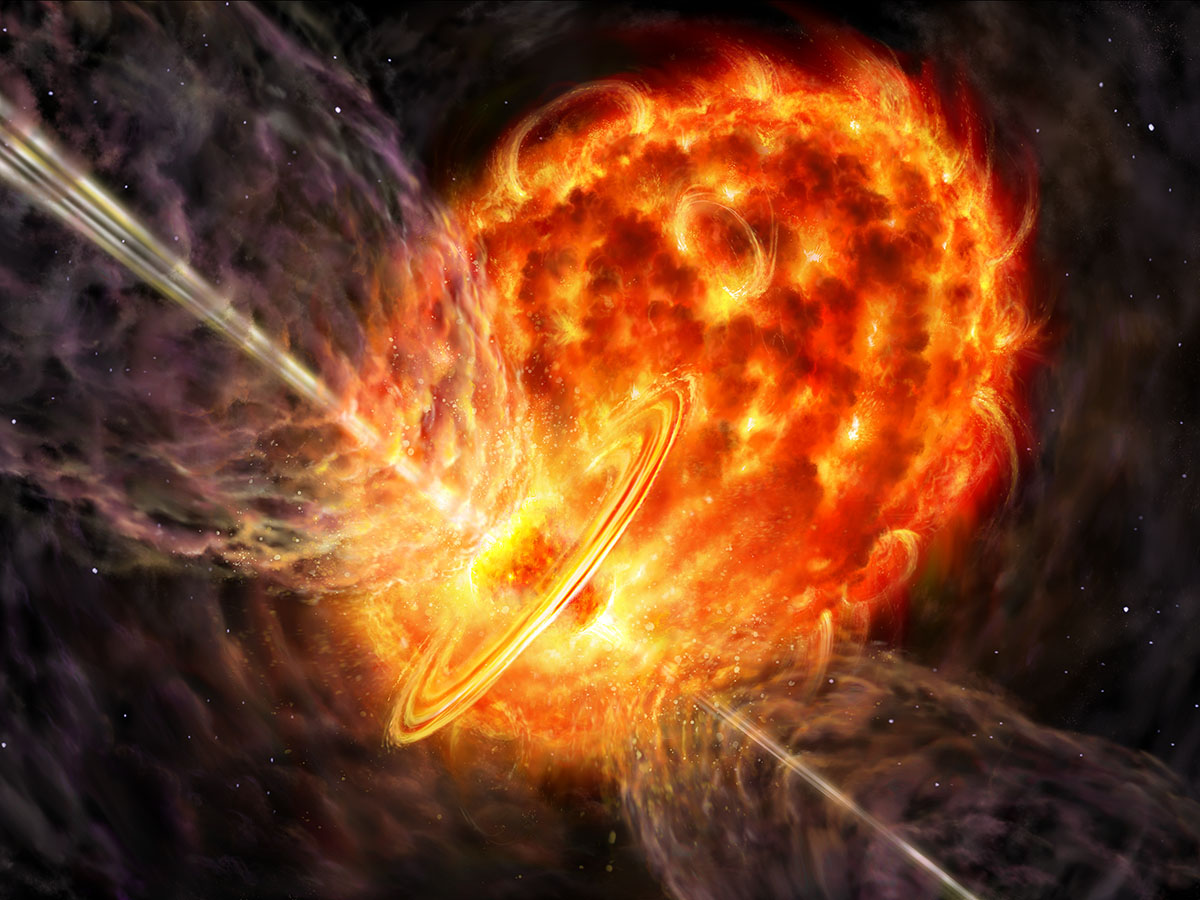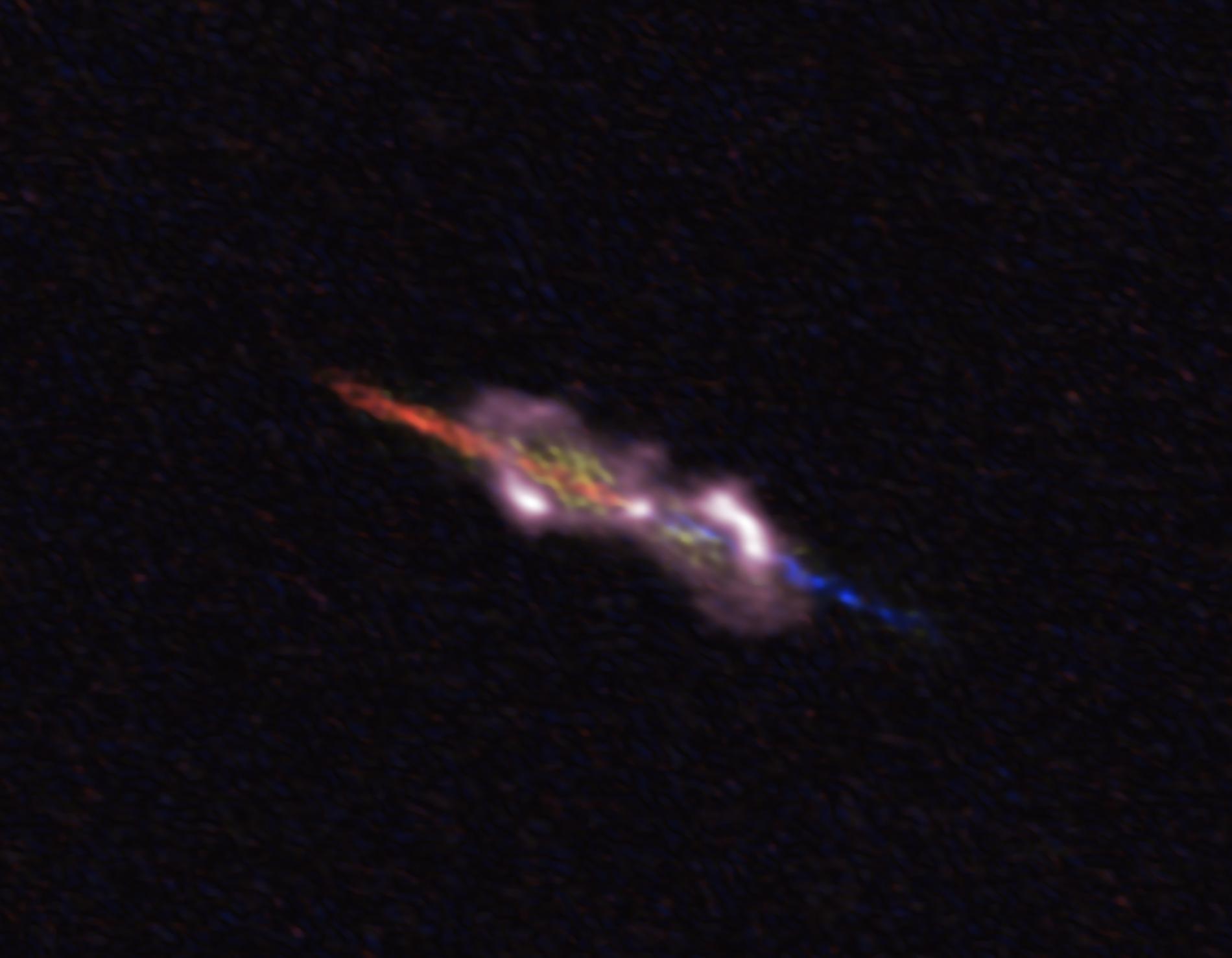The dramatic final dance of stars with shared envelope
The Institute of Astrophysics of Andalusia (IAA-CSIC) participates in the study of fifteen peculiar stars that have turned out to be double stars that, after sharing an envelope, lost a large part of their mass
Unlike the Sun, most stars form binary systems, in which two stars revolve around a common center. Sometimes the distance between the two is so small that one of them, evolving into a red giant, engulfs its partner and they share an envelope. An international team, in which the Institute of Astrophysics of Andalusia (IAA-CSIC) and the Astrobiology Center (CAB, CSIC / INTA) participate, has studied a sample of fifteen unusual stars with the ALMA telescope, and has found that all of them had recently gone through an episode of this type. The finding, published today in Nature Astronomy, brings new perspectives on the life, death and rebirth of stars.
Called "water fountains", these fifteen stars were known to have a radio emission characteristic of water vapor molecules. "We were very curious about these stars, which eject large amounts of dust and gas into space, some in the form of jets with speeds of up to 1.8 million kilometers per hour. We thought we could find clues about how the jets are created, but instead we found much more than that", says Theo Khouri, a researcher at Chalmers University of Technology (Sweden) who is leading the study.
"The water fountains were thought to be more massive stars than the Sun, with between four and eight solar masses, but in this work we see that they began their lives with a mass similar to that of the Sun and that they have gone through a common envelope phase. That is why they show a more violent mass loss than would be expected in a solar-type star", says José Francisco Gómez, a researcher at the Institute of Astrophysics of Andalusia (IAA-CSIC) who participated in the discovery.

The team measured with the ALMA radio telescope (Chile) the emission of carbon monoxide molecules in starlight and compared the signals of different carbon and oxygen isotopes. "ALMA is providing revolutionary results. It is particularly efficient for penetrating into the hitherto unexplored deep central regions of the gas and dust clouds surrounding these water fountains, and will allow us to finally find out how the stellar wind is narrowed and accelerated in the form of jets in these late stages of the evolution of solar-type stars," says Carmen Sánchez Contreras, a researcher at the Centro de Astrobiología (CAB, CSIC/INTA) who is participating in the study.
The data showed that these stars had expelled half of their mass in the last two hundred years, and that this dramatic loss had been preceded by a phase of just a few years, truly brief in astronomical terms, in which both stars orbited together in a kind of common cocoon or envelope. The end point of this brief evolutionary stage could be the merger of the two stars or the formation of a compact system if the envelope is ejected before the merger.
"The outflows of material in these fifteen stars are relatively recent and their evolution is on timescales similar to the lifetime of a human being, and large changes can be seen in a few months. Moreover, these water sources could be almost all of those in our Galaxy, so they are key to understanding the common envelope phase. Therefore, we plan to continue observing them with ALMA and other radio telescopes", says José Francisco Gómez (IAA-CSIC).
The common envelope phase is believed to be a crucial stage in the evolution of binary stars. For example, it is one of the most likely formation pathways for a class of supernovae, type Ia, and is also linked to the formation of planetary nebulae (objects consisting of a white dwarf -the core of a solar-type star- and a fluorescent envelope). Furthermore, it may be related to non-stellar double systems, such as gravitational wave sources, which will go through a common envelope phase; and it may even be important in single-star scenarios, such as the Sun becoming a red giant, engulfing the inner planets and interacting with the giant planets of the Solar System.

T. Khouri et al. "Observational identification of a sample of probable recent Common-Envelope Events". Nature Astronomy, Dec 2021
Instituto de Astrofísica de Andalucía (IAA-CSIC)
Unidad de Divulgación y Comunicación
Silbia López de Lacalle - sll[arroba]iaa.es - 958230676
https://www.iaa.csic.es
https://divulgacion.iaa.csic.es

